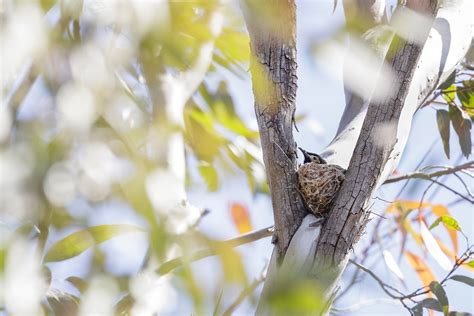Once upon a time, the Australian skies echoed with the melodious songs of the regent honeyeater. These striking black-and-yellow songbirds adorned the landscape in thriving numbers, painting a picturesque scene of biodiversity and vitality. However, as time unfurled its relentless march, a somber shadow crept over these avian wonders.
In an era where their chorus should have resonated louder than ever, the regent honeyeaters find themselves on the brink of obscurity. Once soaring in the hundreds of thousands, their population now hovers precariously at under 300 individuals. The plight of these critically endangered birds serves as a poignant reminder of nature’s delicate balance and humanity’s profound impact.
Amidst this backdrop of dwindling numbers and vanishing melodies, a team of dedicated researchers embarked on a scientific quest to unravel the mysteries shrouding the regent honeyeater’s fate. Their journey led them through corridors of time, where century-old clues whispered secrets long forgotten.
“This delay might be hiding the looming genetic risks,”
Delving into museum archives that cradled specimens more than a century old, these intrepid scientists peered into the genetic tapestry woven by generations past. Through meticulous analysis and cutting-edge technology, they unearthed revelations that shed light on a silent threat lurking within the heartbeats of these majestic birds.
While external appearances may deceive observers into believing that all is well within this dwindling population, beneath the surface lies a different tale—one written in strands of DNA. Despite facing a staggering decline of 99 percent in their numbers, the regent honeyeaters have not traversed this journey unscathed.
“Loss of genetic variation can occur stealthily — and swiftly — after populations reach critically low levels.”
Unraveling this enigma revealed that 9 percent of their genetic diversity had slipped away—a subtle erosion mirroring cracks forming beneath an otherwise serene facade. Dr. Ross Crates from ANU articulated this paradox eloquently when he remarked about this “time-lag” in genetic erosion—an ominous precursor to potential perils veiled by shadows cast from yesteryears.
As dusk settles upon once-teeming habitats now silenced by urban sprawl and climate uncertainties loom like storm clouds on distant horizons, preserving what remains becomes an urgent call to action—a beacon guiding conservation efforts towards brighter tomorrows for these avian gems.
Expert Insights:
Renowned ornithologist Professor Ava Wingfeather opined: “The intricate dance between genetics and demography showcased by the regent honeyeater unveils complexities often overlooked in conservation narratives. Understanding how genetic resilience wanes even as populations dwindle underscores the need for holistic approaches to safeguarding biodiversity.”
Through their groundbreaking study intertwining genomic analyses with environmental projections, Associate Professor Hernán E. Morales and his team painted a comprehensive portrait illustrating how our actions today ripple across time’s canvas—forever altering landscapes both seen and unseen.
In closing chapters yet unwritten for these feathered ambassadors fighting against oblivion’s tide, one truth emerges resolute amidst uncertainty—their survival hinges not only on protecting bodies but safeguarding whispers carried within strands binding pasts to futures unknown.

